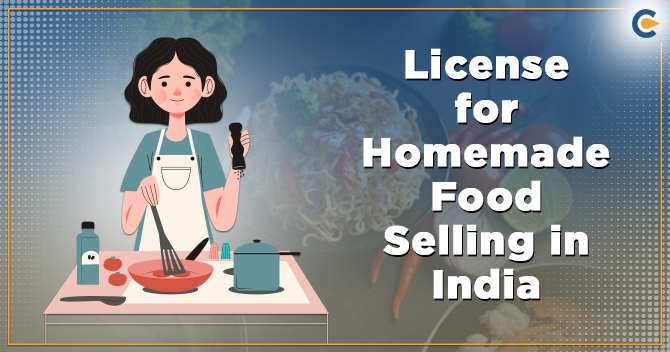In view of the Copenhagen Consensus (2008), Food fortification with micronutrients is considered one of the top three international development concerns by the consortium of economists. Food Fortification continues to be a cost-effective and promising food-based strategy to mitigate micronutrient deficiency, particularly amongst minors and women.
FSSAI, the food regulator in India, defines fortification as a deliberate approach of increasing the amount of imperative micronutrients in food articles to enhance the nutritional quality and facilitate health benefits to the masses.
U/S 92 of the FSS Act, 2006, the FSSAI is vested with the power to make regulations. The food fortification regulations introduced on August 2, 2018, known as Food Safety and Standards (Fortification of Foods) Regulations 2018, thereby bringing all relevant norms concerned to it under one ambit.
History of Food Fortification in India
The concept of food-based strategy came into light in 1953 when the fortification of Vanaspati hydrogenated edible oil with vitamin A & D was mandated to deploy the National Iodine Deficiency Disorders Control Programme.
Food regulator FSSAI set up the Food Fortification Resource Centre (FFRC) to advocate food fortification as an additional strategy on a grand scale. It serves as a resource hub and integrates with various stakeholders to aid with the Ministry of Human Resource Development and Ministry of Women and Child Development directives.
In 2018, the fortification standards were introduced for five Staples, as shown below:
- Vegetable oil and milk with Vitamin A & D,
- Salt with iodine or iodine and iron in combination
- Flours (Atta and Maida)
- Salt with iodine or iodine and iron in combination
- Rice when fortified, with folic acid, iron, & Vitamin B-12 in combination and the optional addition of Vitamin B1, B2, B3, B6 and Zinc.
Existing Regulations for Food Fortification in India
- Heme iron is not allowed to be added as a primary iron source. Later on, with the introduction of three amendments to this regulation in the years 2020 and 2021, standards pertaining to Milk powder identical to Fortified milk; Multigrain Atta identical to Fortified Atta; and some processed food articles such as Bakery wares, Cereal products with iron, folic acid, and Vitamin B-12 and fruit-based drink with Vitamin C has also been included.
- Moreover, it is also intimated that the raw material in fortified food articles may be fortified with the recommended threshold of micronutrients and additives as per the Food Safety and Standards (Food Product Standards) Food Additives Regulation 2011.
- However, this regulation excludes fortified processed food articles and Vanaspati with high fat and sugar content.
- Additionally, FBOs need to furnish an undertaking relating to quality assurance twice a year. It does not restrain these entities from adding nutrients to the food articles other than those mentioned;
It can be achieved under the Proprietary food category in quantities not surpassing one RDA (i.e. Recommended Dietary Allowance) of the respective micronutrient.
- Except for systems such as Mid Day Meal Scheme, Integrated Child Development Service, and Public Distribution System, fortification of food articles is not compulsory; it remains a voluntary decision for food-based entities.
- Unlike conventional salts such as pink salt, rock salt, and black salt, as per the Food Safety and Standards (Prohibition and Restriction on sales) norms, iodization of common (white) salt remains a legal compulsion; and also for those food articles where the addition of specific micronutrients is specified as the regulations of FSS.
- In Jan 2021, the Food regulator mandates FBOs to milk and fortifying edible oil and milk with vitamin A and D. Furthermore, the fortification of rice with folic acid, iron, and vitamin B12 have been notified to be made mandatory across all safety net schemes by 2024 to treat the disease like anaemia.
- The regulation has mandated the addition of end-users education aspect, +F logo, and the terms fortified with fortificant’s name. Under that may accompany a tag line Sampoorna Poshan Swasth Jeevan, on a label to identify such food articles in the marketplace. But, Iodized salt is exempted from such a requirement.
- Similarly, in view of the recent amendment that came to effect on August 27, 2021, food articles fortified with an iron will accompany the following declaration on the pack ;
‘People with Thalassemia may take under medical supervision, and persons with Sickle Cell Anaemia are advised not to consume iron-fortified food products’.
- It must also adhere to the Food Safety and Standards (Packaging and Labeling) Regulations 2011[1].
- Health claims can be made on such foods for various micronutrients in view of Schedule IV of Food Safety and Standards (Advertising and Claims) Regulation 2018. The regulation also caters to concerns of vegetarians by allowing the utilization of only plant-based fortificant; it clearly states that the Vitamin D added in food articles is sourced from plants.
- The dosages shall be reflected in metric units and are hereby deliberately processed to facilitate only 30-50 per cent of one’s daily requirement to avert negative effects.
- For the purpose of analysis and compliance, the tolerance limit of -10 per cent of the revealed total value may be permitted, provided that the max threshold of added micronutrients is met.
- As per FFRC broacher released in Apr 2020, 55 brands of fortified milk, 80 brands of fortified wheat flour, 12 of fortified wheat flour, 8 brands of double fortified sal, 2 brands of fortified rice are available in the marketplace with +F endorsement.
Some prominent Indian-based brands in the category of fortified wheat flour include; Pillsbury, Patanjali, Double Fortified Salt –Ankur, Milma, Nandini, Vijaya, Edible oil includes Cargill, Mother Dairy-Dhara, so and so forth.
Conclusion
Effective implementation of this regulation, with periodic evaluation and tracking of the standards, maintenance of seamless supply and demand of such food articles, and the micronutrient profiling of the population, will likely have a healthy impact on the society and aid to accomplish the objective of Kuposhan Mukt Bharat by 2022.
Read our article:FSSAI Releases Draft Regulations for GMO contained Food Items











